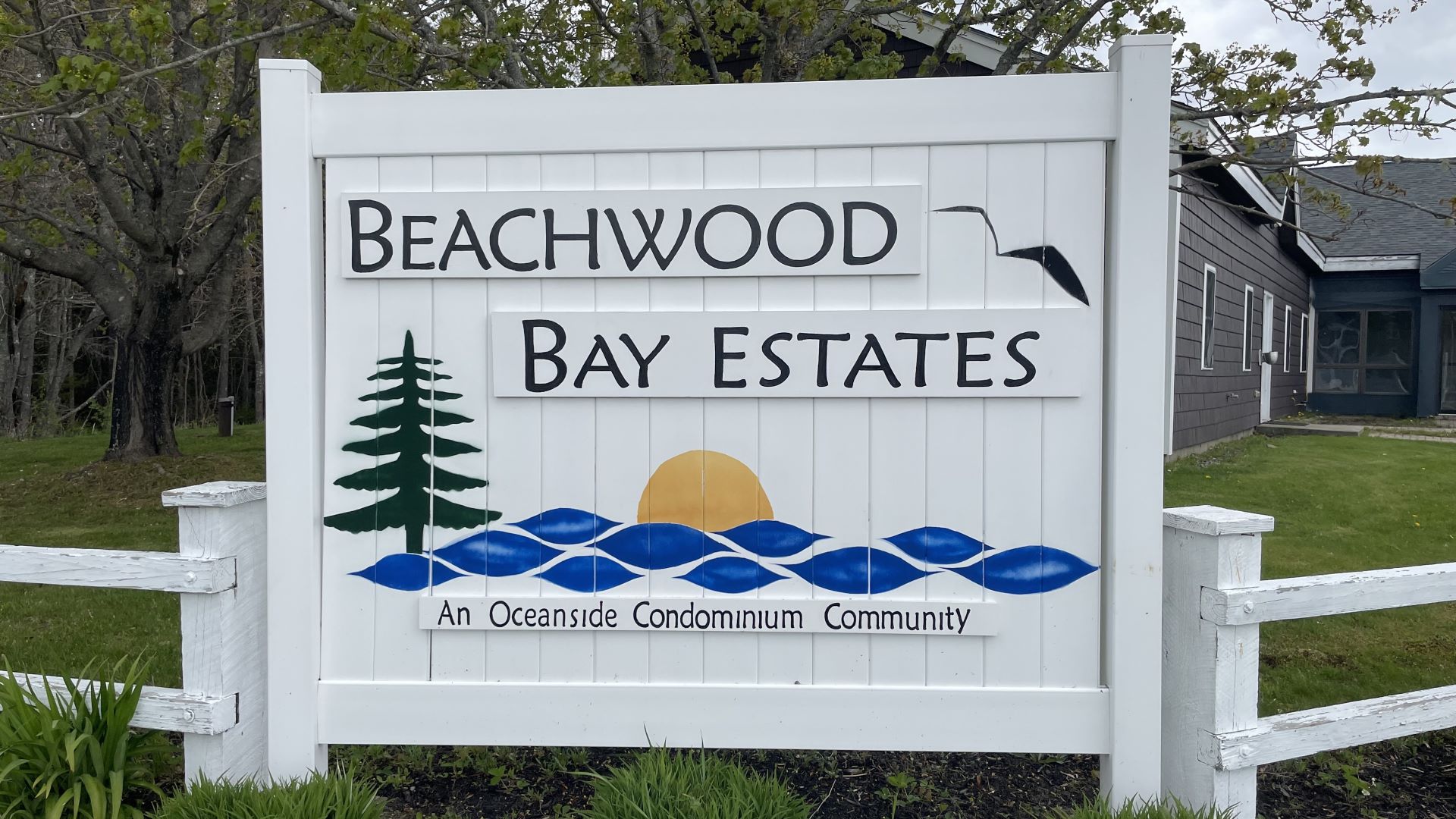From the deck of their Beachwood Bay Estates condominium in the Washington County town of Cutler, Rita and Gary VanGyzen spend mornings drinking coffee and breathing fresh ocean air off the deep blue waters of Holmes Bay.
A promotional video produced by the condominium homeowner’s association captured the community’s lush green spaces, winding paths and seaside benches.
Not shown was the adjacent Cutler U.S. Navy Firehouse Station — the source of well contamination by PFAS, so-called “forever chemicals” used widely in many products, including firefighting foams.
Several types of PFOA and PFAS, which stand for per- and polyfluoroalkyl substances, were found in more than half of the 60 wells the Navy tested in the area, including those providing water for the 64 condominiums in 2019. The private condominiums sit on what was once the 80-acre former Navy Administrative and Housing Area, which was transferred to Cutler Development Corporation two decades ago.
As of December, 19 wells remained above the accepted standard for PFAS, according to the Navy. The government provides bottled water to many area residents, along with a water treatment system.
Homeowners and the town of Cutler were notified by the Department of Defense earlier this month that the agency’s testing and analysis is complete and a final report on the water quality adjacent to the base will be presented at a public hearing, probably in early to mid-June.
It’s the latest step in a saga that started in September 2020, when condominium owners were notified that their water was tainted with PFAS, stemming from fire retardants and other toxic materials used at the fire training site since the base opened in 1961. Almost immediately, residents say hundreds of cases of bottled water began showing up, shipped in by the Navy until filtration systems were installed the following year.
The concentration of PFAS in the water at the VanGyzen’s home was among the highest. Although that information was fully disclosed prior to the sale of their home, Rita VanGyzen didn’t hesitate to close the deal. Still, the retired couple isn’t confident the filters are totally effective, and they continue to buy bottled water for drinking and cooking just to be safe, costing more than $125 a month.
“It’s a small price to pay,” VanGyzen said. “I mean, to live this close to the water in Rhode Island would be close to a million bucks. So I said, yes – I scored!”
According to a November 2020 Navy NSA Fact Sheet, test results from the initial 54 wells
tested (six more wells were added later) showed combined PFOA and PFAS levels as high as
1,263 Parts Per Trillion (PPT), and some wells recently tested at 3,640 ppt, far exceeding both
Maine’s interim drinking water standard of 20 PPT and the federal Environmental Protection
Agency’s (EPA) threshold of 70 PPT. A group of over 9,000 man-made chemicals, associated
with cancer, PFAS were once used in everything from non-stick cookware to fabric coatings—
but they also stick around in the environment and bodies indefinitely because they break
down very slowly.
Adam Meyer, who has lived in Beachwood Bay Estates since 2006, owns adjacent commercial property and four of the condos, including one of the two without water filtration, where his ex-wife and their three young sons live.
Meyer’s condo also had one of the highest PFAS concentrations. Since he’s lived in the condo community longer than any other resident, Meyer, who is 42, said he can’t help being concerned about health repercussions for his family and himself.
“I actually had a heart attack when I was 38, which is pretty unusual,” Meyer said. “I’ve requested (the DOD) to pay for blood samples to get a baseline, but they flat-out refuse to do it.”
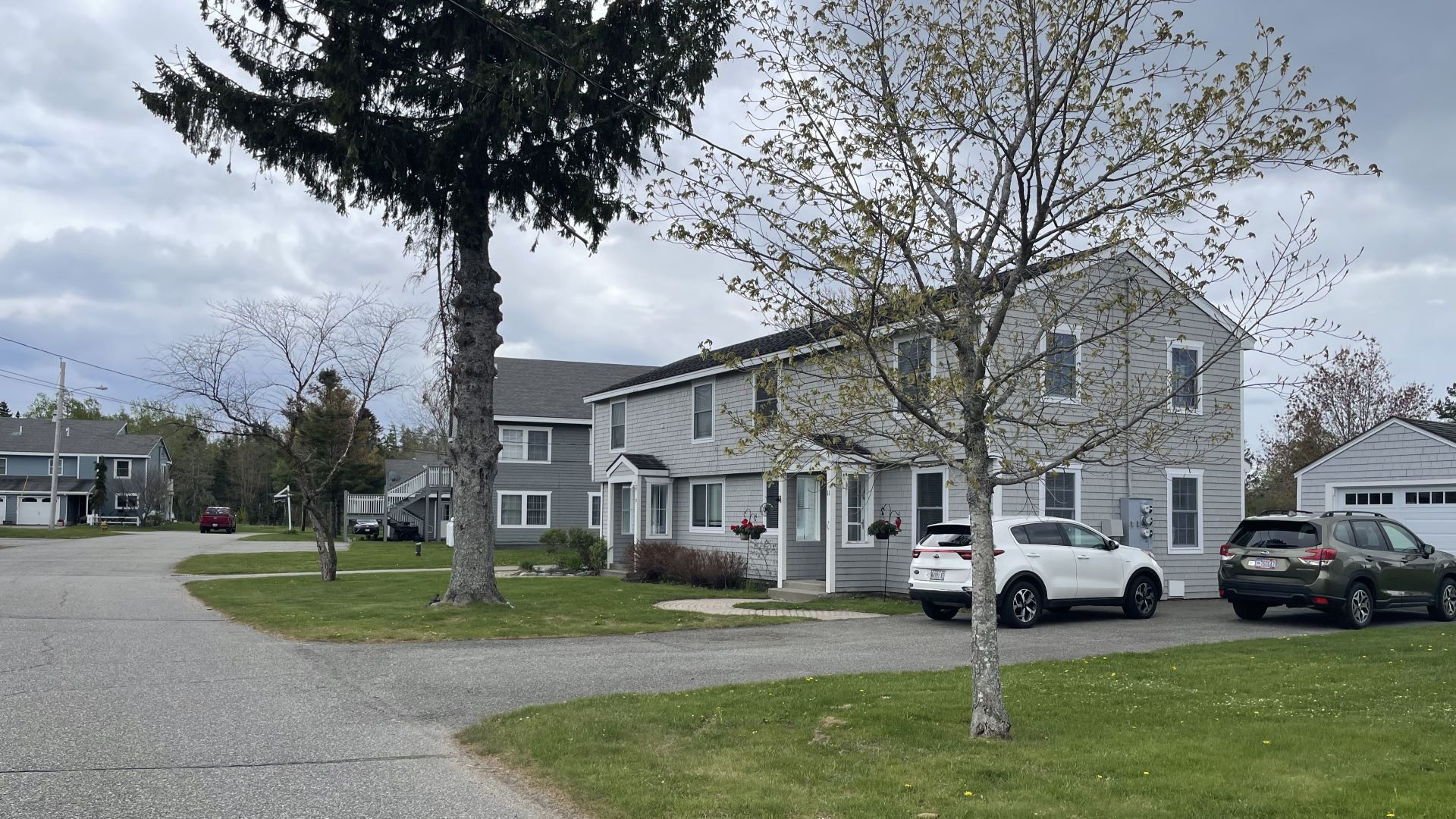
Meyer stressed that he and other homeowners appreciate that the Navy is taking accountability, but he still wonders whether the Navy should have tested their wells sooner — and is telling them everything.
“I’m not totally convinced that the Navy was forthcoming originally with the information when they first got the information,” Meyer said. “They had some activity at the fire station over five years ago, where they removed all the materials off site and disposed of it, so I’m willing to bet that it goes far back to that time frame.”
Navy records show ongoing investigations, testing, analysis and mitigation of environmental hazards at Cutler Navy Base properties dating to February 1988. But the private wells were not included in the testing until March 2020, when investigations at the fire station property indicated PFOA and PFOS had moved off the NSA Cutler property in groundwater being used as drinking water by nearby residents, according to a Navy fact sheet.
Including the preliminary assessments, inspections, and the off-base drinking water sampling,
a DOD spokesperson said approximately $1.6 million has been spent by DOD to address PFAS
in Cutler to date.
PFAS testing at other DOD facilities in Maine began much earlier than in Cutler. PFAS were detected at the former Brunswick Naval Air Station in 2016, for example, and later in the town’s district water supply. Efforts continue to contain the Brunswick plume of perfluorohexanesulfonic acid and other PFAS, such as those in Cutler.
Still, some Cutler residents seemed largely unconcerned.
“The Navy took care of it and monitors the water,” said Dan Morin, a retired tractor trailer driver. “I mean, we could have bought a home somewhere else and found PFAS in the water there, and had to take care of it ourselves.”
Earlier this week, Beachwood Bay Estates property manager Patti Sansing took a Maine Monitor reporter for a drive through the neighborhood to explain what the DOD and state Department of Environmental Protection are doing to mitigate the contamination. Sitting stoically behind the wheel of her Volkswagen SUV, Sansing’s mobile command center for managing the project on behalf of residents, she juggled a clipboard loaded with contact sheets, data and letters from the DOD.
Sansing said she fought to have the DEP filter the wells that fell below the federal threshold for PFAS. Large filtration systems, double canister units about five feet tall, were installed inside the condos by the DOD for wells testing above 70 PPT. Slightly smaller systems were installed for contaminated wells that fell below DOD guidelines. Each system typically consists of two granular activated carbon treatment units with a 5-micron pre-filter for sediment removal, sample ports before, between and after the carbon units, and a flowmeter.
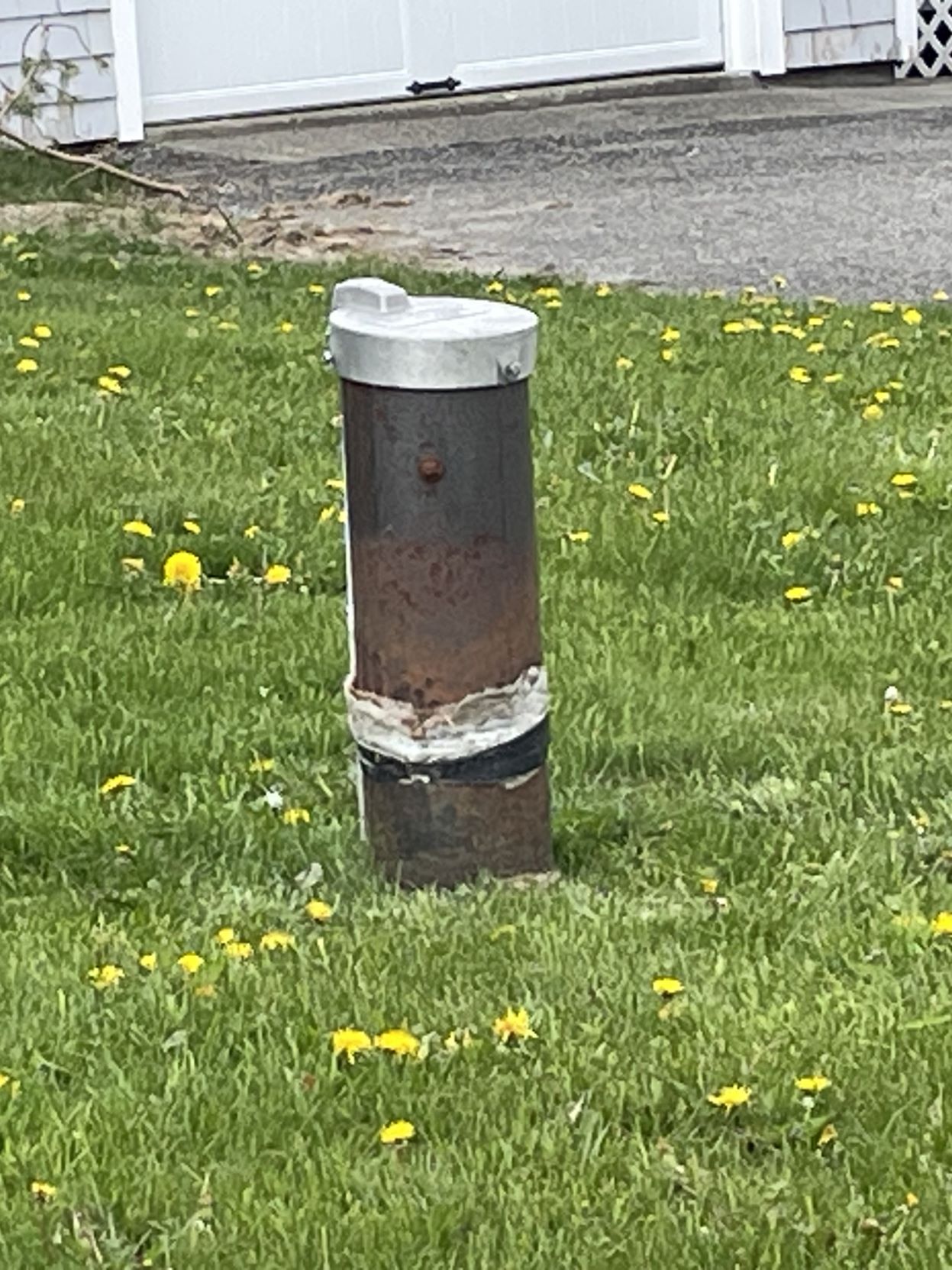
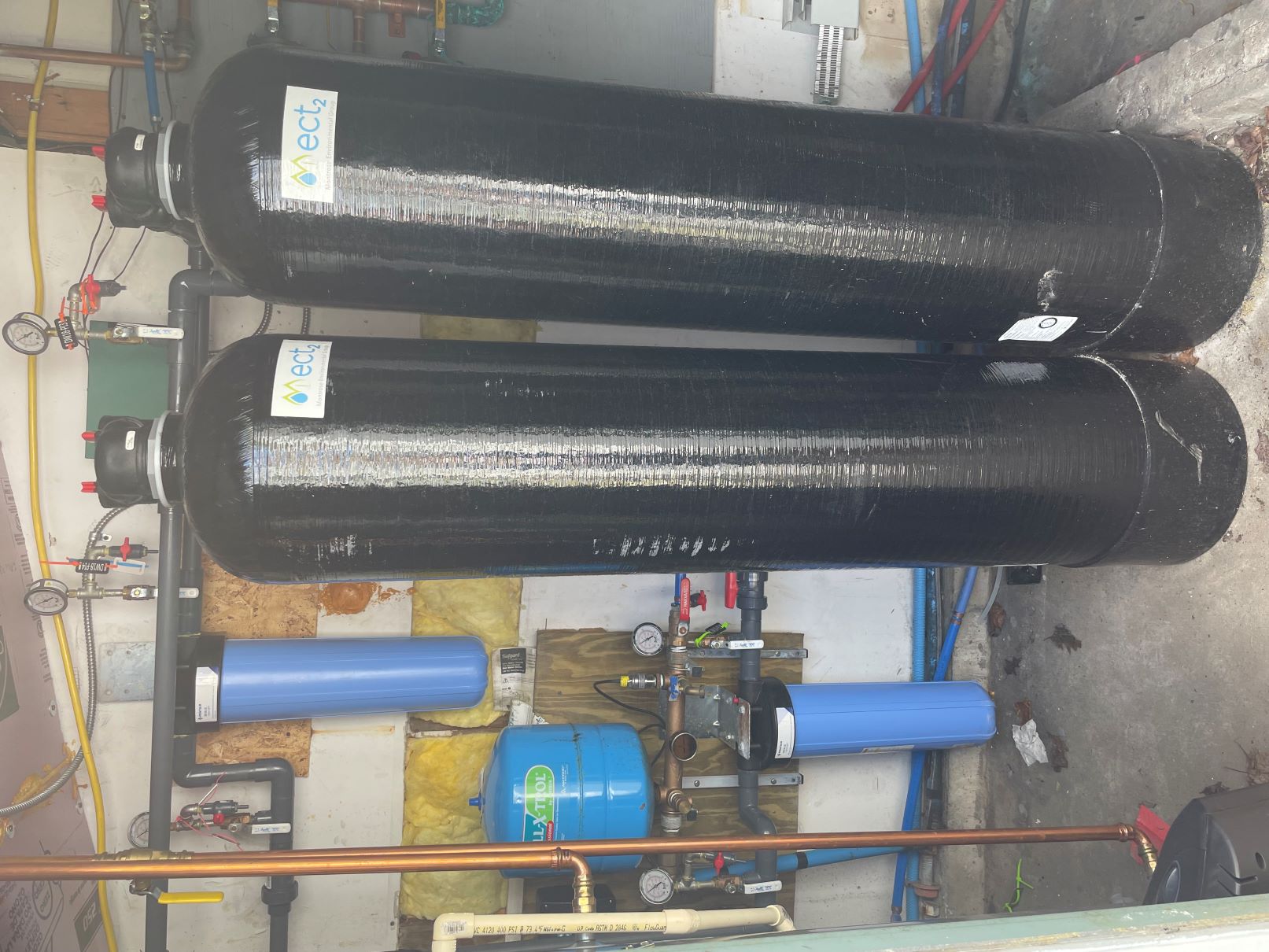
Purchase and installation of the sophisticated filtration systems cost the state $47,000, not including the cost to monitor and maintain these systems, according to David Madore, deputy commissioner for the Maine DEP. Since the Navy is responsible, Madore said the DEP has not specifically allocated funds for cleanup activities in Cutler from the pot of $20 million the state received for PFAS cleanups from the American Rescue Plan and Maine Jobs Recovery Plan. How much the DEP continues to use in Cutler is uncertain.
“For DEP-installed filter systems, monitoring and maintenance will be conducted at a periodic frequency and as long as funding allows,” Madore said.
Since more than 500 private drinking water supplies statewide have tested above Maine’s safety standard for PFAS, with the problem growing, the state’s superfund cleanup funds are being spread thin.
Although it would eliminate conflicting determinations of contamination, proposed federal legislation is expected to pass that would establish a much lower, possibly as little as 4 PPT, uniform threshold nationally. But a lower benchmark would more than likely lead to identification of many more sites with unsafe PFAS levels, stretching cleanup funds even further.
How much DOD money is available and how long monitoring of the water will continue is also uncertain. Those costs don’t even include whatever permanent remediation solution the DOD ultimately chooses to implement.
Beyond mentions about a possible off-site well or water tower to supply clean water for all
residents, homeowners said they have been left hanging about how safe water will be
provided in the future that doesn’t require massive home filtration systems. A DOD
spokesperson responded, saying the Navy is currently reviewing the data and
recommendations for a permanent plan expected to be in-place within the next five years,
with monitoring continuing until then.
In addition to uncertainty, even more concerning, according to the DEP, is that not all of the
contaminated water has been addressed, even for the short term. In his statement to the
Maine Monitor, Madore said, “results received to date show PFAS levels in residential
drinking water wells above Maine’s interim drinking water standard requiring filter systems
to be installed.”
There is also potential for the number of affected wells beyond Beachwood Bay Estates to
grow. The Navy has been resampling some drinking water wells near the Cutler Fire Station
where PFOA and/or PFOS were initially detected below the DOD threshold but are in close
vicinity to wells that tested above the threshold. These well locations are resampled on an
annual basis to monitor concentrations, according to the DOD spokesperson.
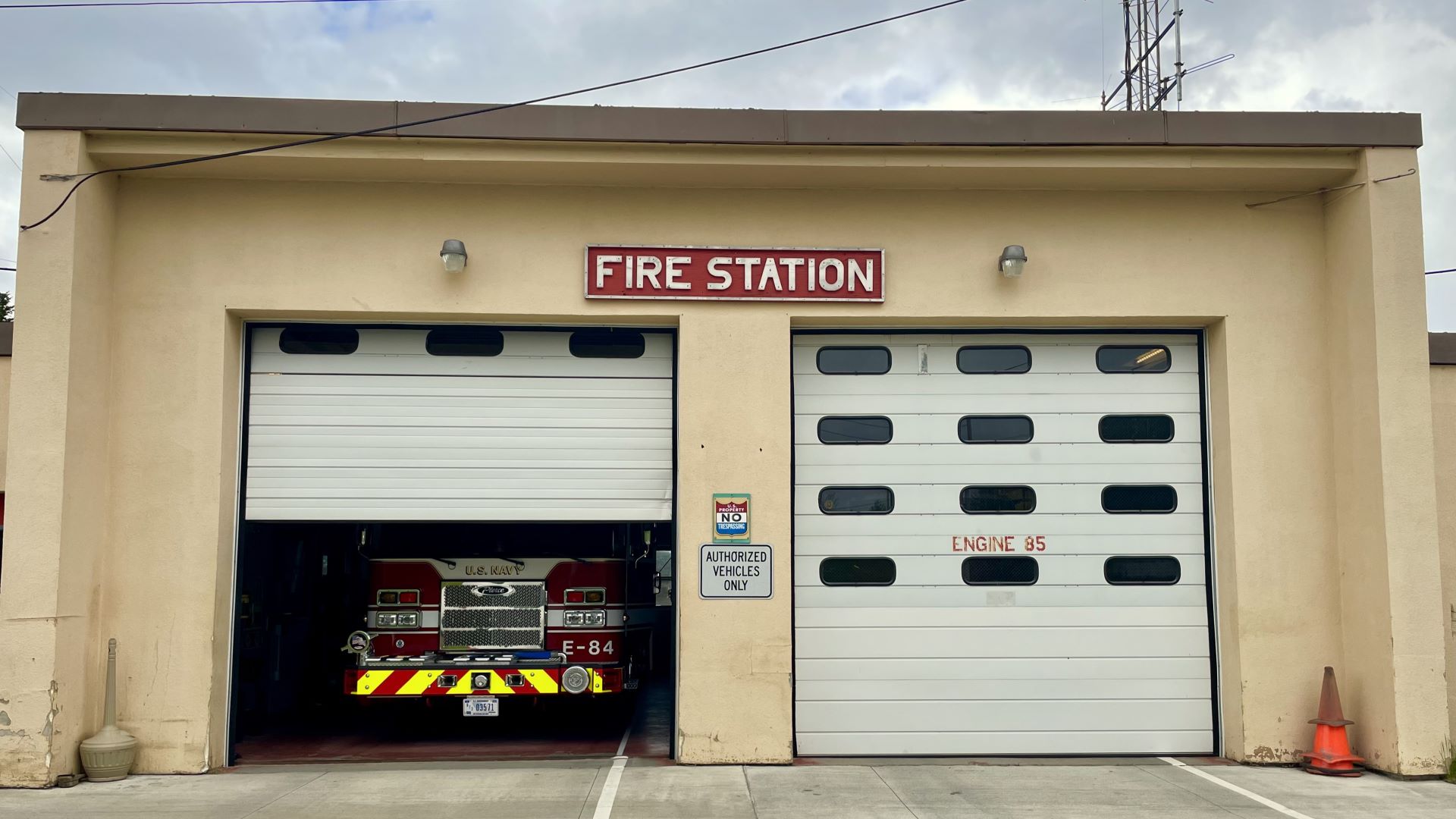
Unaware, Sarah and Jason Beauregard bought that house in August 2020. They were immediately welcomed with the DOD’s notification letter.
Their home sits on one acre, next door to the fire station’s leachfield, the hot spot for the contamination. The couple knew nothing about the tainted leach field and their home’s tainted water well when they bought the house, despite Jason’s new job as a firefighter at the Navy fire station. Like Meyer, who worries about his health, the lack of early transparency and slow progress toward a permanent solution also concerns Sarah and makes her suspicious.
“I understand that (the DOD) are kind of dotting their I’s and crossing the t’s, but I also know that it’s in their best interest to represent the Navy and their pocket, too,” Beauregard said. “So how thick the wool is that they’re trying to pull over our eyes is another story.”
The Beauregards and other homeowners also report ongoing issues with post-filter equipment, including pumps and appliances, they claim were gummed up with filtration materials. The DOD has not agreed to compensate them.
Nonetheless, most residents believe things could be a lot worse, said Sansing, the property manager who speaks with the homeowners daily. She said although most homeowners continue to buy bottled water, costing about $100 a month, they tell Sansing they are just relieved the Navy took responsibility for cleaning up the contamination.
“Some people care and some people don’t,” said Sansing. “They don’t care because they’re not going to drink the water regardless.”
Sign up to receive The Maine Monitor’s free newsletter, Downeast Monitor, that focuses on Washington County news.
Know of a Washington County story we should cover? Send us an email: gro.r1751428120otino1751428120menia1751428120meht@1751428120tcatn1751428120oc1751428120.


